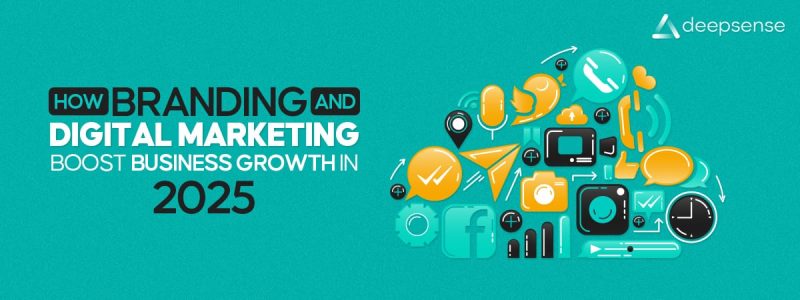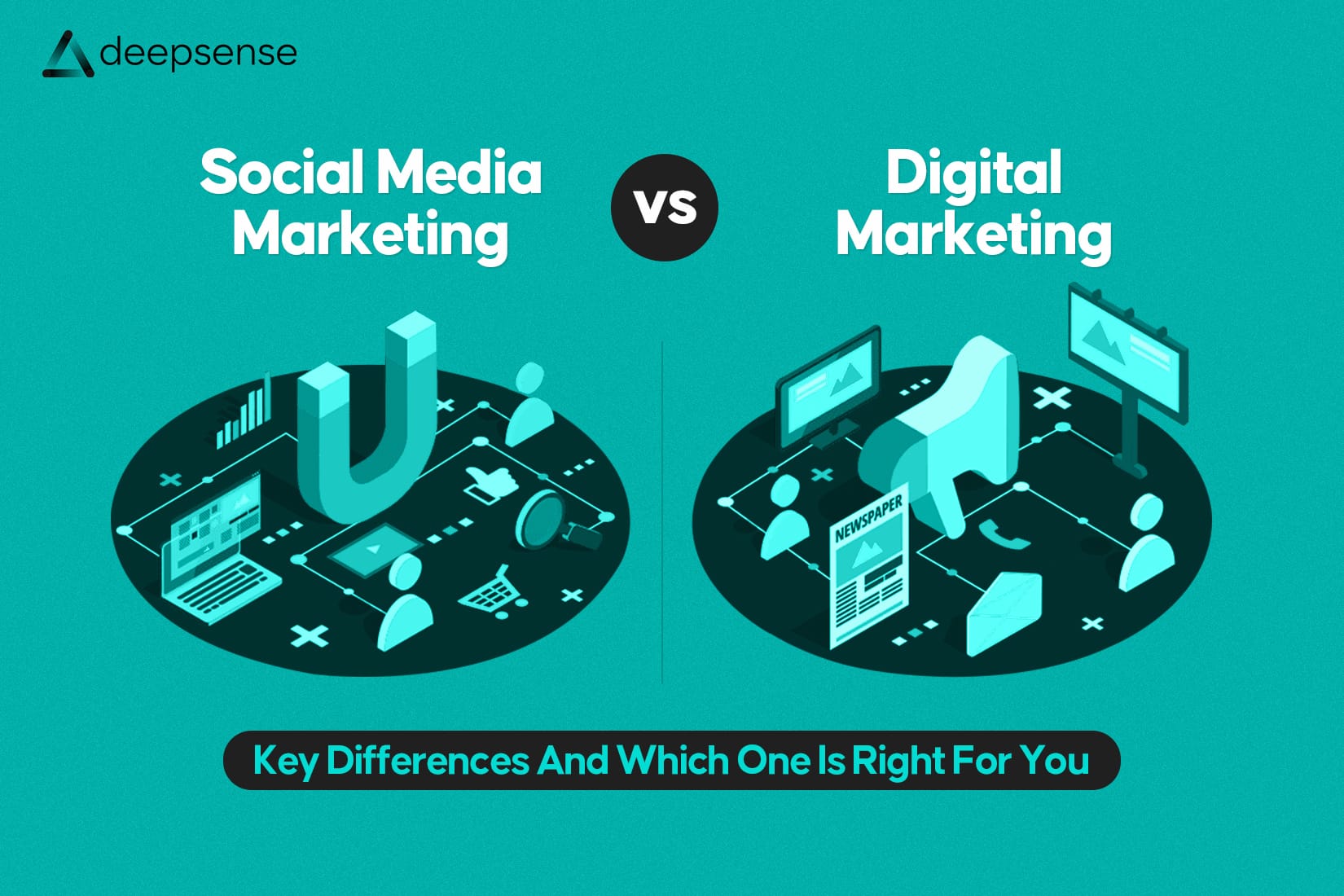If you are a small business owner trying to grow online, you already know the truth: visibility is everything. Having the best product or service is not enough anymore. If customers cannot find you when they are searching, someone else will win the sale.
The good news is, thanks to digital marketing, small businesses today can reach audiences just as effectively as big brands. With the right strategies, the right tools, and a smart investment of time and budget, you can build your brand, grow your customer base, and scale sustainably.
In this blog, let’s dive deep into the top 10 digital marketing strategies that are actually working in 2025 for small businesses. I will walk you through not just what they are but how you should implement them in a way that suits your business stage and goals.
Ready to dive in? Let’s go.
Why Digital Marketing is Crucial for Small Businesses Today
Small businesses do not have the luxury of massive advertising budgets or celebrity endorsements. Every rupee and every minute spent on marketing has to bring measurable results. This is exactly where digital marketing becomes a game changer.
Here is why it matters so much:
1. Levels the Playing Field
With the right digital strategies, a small business can outrank a giant competitor on Google search. You do not need millions to build a brand presence anymore. You need smart content, strong SEO, precise targeting, and consistent engagement.
A well-optimized Google My Business listing or a viral Instagram Reel can bring you the same customers that big brands spend lakhs trying to attract.
2. Highly Targeted Reach
Traditional marketing like newspaper ads or billboards throws your message to everyone, hoping it sticks. Digital marketing lets you be laser-specific.
Want to target women aged 25 to 40 in Mumbai who recently got engaged?
Want to promote your new fitness class to people who recently searched for “beginner gym workouts”? With digital ads, email marketing, and SEO, you can do exactly that.
No wastage. No guessing.
3. Cost-Effective Growth
Digital Marketing is much more affordable compared to traditional advertising.
- You can run Facebook Ads for as little as ₹200 a day.
- You can start a blog or an email list practically for free.
- You can build an organic Instagram community with just creativity and consistency.
In fact, studies show that digital marketing costs 62 percent less per lead than traditional marketing methods.
For small businesses where margins matter, this makes a massive difference.
4. Immediate and Measurable Results
Another huge advantage is the ability to track everything in real time.
You can see:
- How many people clicked your ad
- How long they stayed on your website
- Which product page they loved
- Where they dropped off
This allows you to tweak campaigns on the go and maximize your return on investment.
There is no more waiting for months to know if a billboard worked. You get instant feedback.
5. Builds Stronger Customer Relationships
In today’s digital world, customers expect more than just a product. They want a relationship with the brands they support.
Digital marketing allows you to stay connected through:
- Engaging social media content
- Helpful email newsletters
- Quick responses to customer queries
- Personalization based on customer behavior
Over time, this builds loyalty, repeat purchases, and organic word-of-mouth promotion — which is priceless for small businesses.
6. Expands Your Market Beyond Your Neighborhood
Without digital marketing, you are mostly limited to your local community.
But with the right online strategies, you can ship products across cities, offer virtual services nationwide, or even expand globally. Small boutiques, fitness coaches, consultants, artisans, and even local cafes have scaled nationally just by leveraging digital tools like e-commerce websites, social media, and targeted online ads.
7. Prepares You for Future Growth
Finally, building a strong digital presence early creates a solid foundation for scaling your business later. As you grow, your SEO rankings, your email database, your social media following, and your brand awareness become valuable assets. They compound over time and make each future launch, expansion, or new offer easier and more successful.
Businesses that ignore digital today risk being invisible tomorrow.
Top 10 Digital Marketing strategies for small businesses
1. Build a High-Converting Website Optimized for SEO
Your website is your digital storefront. And just like you would not leave a physical shop dusty and hard to navigate, you cannot afford a slow, clunky website.
Here is what you need:
- A fast-loading, mobile-optimized website (more than 65 percent of all browsing now happens on mobile devices).
- Clear call-to-action buttons like “Book Now,” “Contact Us,” or “Shop Now.”
- Pages optimized around real search queries your customers use, like “best bakery near me” or “affordable accounting services.”
- SEO-optimized titles, meta descriptions, and schema markup to make sure search engines understand your content.
Pro tip:
Use tools like Google Search Console and Ahrefs to find what people are searching for in your niche. Build your service pages and blogs around those keywords naturally.
2. Invest in Google My Business Optimization
Local search is massive for small businesses.
Studies show that over 78 percent of local mobile searches result in offline purchases within 24 hours.
Setting up and optimizing your Google My Business (GMB) listing helps you appear in local map packs and “near me” searches. Update your listing regularly with:
- Posts about offers, events, and announcements.
- High-quality images of your products or location.
- Correct business hours and contact information.
- Quick replies to reviews and questions from customers.
Fun fact:
Profiles with over 100 photos get 520 percent more calls and 2717 percent more direction requests.
3. Master the Art of Content Marketing
Content is not just king anymore; it is the kingdom. Create high-quality blogs, guides, case studies, videos, and infographics that answer your customers’ questions. For example, if you run a fitness studio, write blogs like “Top 5 Beginner Workouts at Home” or “How to Choose the Right Personal Trainer.”
This not only brings organic traffic but also builds trust and authority.
Technical tip:
Follow a content cluster strategy. Build pillar pages like “Complete Guide to Fitness for Beginners” and link smaller blogs around it. This helps in SEO massively and boosts your website’s topical authority.
4. Leverage Paid Ads Smartly
If you want fast results, you need to run smart ads.
Platforms like Google Ads and Meta Ads (Facebook and Instagram) allow you to target very specific audiences based on location, behavior, interests, and even life events like marriage or a new job.
Start with a small daily budget. Test multiple ad creatives and copy. Measure cost-per-lead and cost-per-sale.
Pro tip:
Retarget visitors who bounced off your website without converting using Facebook Pixel or Google Remarketing Tags. Retargeted visitors are 70 percent more likely to convert.
5. Build Your Email Marketing Machine
Email is still one of the highest ROI channels, delivering around 42 dollars for every 1 dollar spent. Build an email list from day one using pop-ups, lead magnets like eBooks or discount coupons, and checkout opt-ins.
Segment your list based on customer behavior. Send newsletters, special offers, birthday greetings, and reactivation emails if someone has not purchased in a while.
Tip:
Use tools like Mailchimp, Klaviyo, or ConvertKit and automate your welcome sequences and follow-ups to save time.
6. Win Big on Social Media
Social media platforms are where attention lives today. But the game has changed in 2025.
It is no longer enough to just post pretty pictures. You need to create interactive content like:
- Short vertical videos (Reels, Shorts)
- Behind-the-scenes glimpses
- Live sessions
- Customer stories
- Polls and quizzes
Focus on the platforms where your customers hang out. If you sell jewelry, Instagram and Pinterest are your playgrounds. If you offer B2B services, LinkedIn is where you need to show up.
Interesting stat:
Brands that post 3 to 5 Reels per week get 67 percent more engagement than those that post static images alone.
7. Prioritize Online Reviews and Testimonials
Before buying anything today, customers look at reviews. In fact, over 92 percent of consumers read online reviews before making a purchase decision. Make it easy for happy customers to leave reviews. Send follow-up emails with direct review links. Offer loyalty points for verified reviews. Display customer testimonials prominently on your website and social media.
Expert trick:
Video testimonials have up to 30 percent higher conversion rates compared to text reviews.
8. Dive into Video Marketing
Video content consumption is exploding.
According to Wyzowl, 91 percent of consumers want to see more online videos from brands. You do not need a massive budget.
Start with simple smartphone videos explaining your product, showing customer stories, or giving tutorials. Host videos on YouTube (great for SEO), embed them on your website, and chop them into short clips for Instagram and TikTok.
Technical bonus:
Use video SEO techniques like adding transcripts, keyword-rich descriptions, and catchy thumbnails to boost your video discoverability.
9. Build Trust with Personal Branding
Customers buy from people they trust, not faceless companies.
As a small business owner, your story, your values, and your personal brand matter.
Show up consistently through:
- Founder’s notes
- Personal LinkedIn updates
- Instagram Stories
- Podcast appearances
This builds an emotional connection, and trust leads to conversions.
Tip:
Document your journey authentically, including your wins, your mistakes, and your lessons. Authenticity beats perfection.
10. Track, Analyze, and Optimize Everything
Digital marketing without analytics is like flying blind.
Use tools like:
- Google Analytics 4 to understand website behavior
- Hotjar or Crazy Egg for heatmaps
- Facebook Business Manager for ad insights
- SEMrush or Ahrefs for SEO tracking
Check what is working and double down. Identify what is not converting and pivot fast.
Key metrics to watch:
Website traffic, bounce rate, conversion rate, cost per lead, customer acquisition cost (CAC), and customer lifetime value (CLTV).
Without numbers, your marketing is just guesswork.
Final Thoughts
Small businesses today have a massive opportunity to punch above their weight if they play their digital cards right.
The strategies we discussed are not isolated tactics. They work best when they are connected and feeding into each other. Your SEO feeds your content marketing. Your content feeds your social media. Your social media feeds your email list. Your email list fuels your sales.
Consistency is key. You cannot post blogs once every six months or run ads for just a week and expect miracles. Smart, persistent efforts compounded over time create momentum that no competitor can easily replicate.
If you are serious about growing your small business in 2025 and beyond, remember this: digital marketing is not an expense. It is your biggest investment for future growth.
Start with one or two strategies. Execute them well. Track results. Then expand.
The digital landscape is wide open for those who are willing to master it. Your customers are already searching for you. The only question is, are you showing up where they are looking?
FAQs
1. What are the most effective digital marketing strategies for small businesses?
The most effective strategies include building a strong website, focusing on local SEO, running targeted social media campaigns, creating valuable content, using email marketing, investing in paid ads wisely, and leveraging customer reviews.
2. How can small businesses use social media for marketing?
Small businesses can use social media to showcase products, share customer stories, engage with audiences through polls or Q&As, run promotions, collaborate with influencers, and build a loyal community through regular, authentic interactions.
3. Why is local SEO important for small businesses?
Local SEO helps small businesses appear in “near me” searches, Google Maps, and local listings. It drives foot traffic, increases visibility in the local community, and attracts customers ready to make a purchase.
4. Is paid advertising a good investment for small businesses?
Yes, if done carefully. Small businesses can use paid ads on platforms like Google and Facebook to target specific demographics, locations, or interests. Smart budgeting and focused targeting help maximize ROI even with limited funds.
5. How often should small businesses post on social media?
Consistency is key. Ideally, small businesses should post 3–5 times a week to stay visible, engage audiences, and maintain brand presence without overwhelming followers.
6. What type of content works best for small business marketing?
Educational blog posts, product demos, customer testimonials, behind-the-scenes videos, infographics, and interactive posts like polls or quizzes tend to work best. Content that provides value or tells a story resonates strongly with audiences.
7. How can small businesses measure their digital marketing success?
Businesses can measure success by tracking KPIs like website traffic, social media engagement, conversion rates, customer acquisition cost, and return on investment (ROI) using tools like Google Analytics, Facebook Insights, and CRM dashboards.










